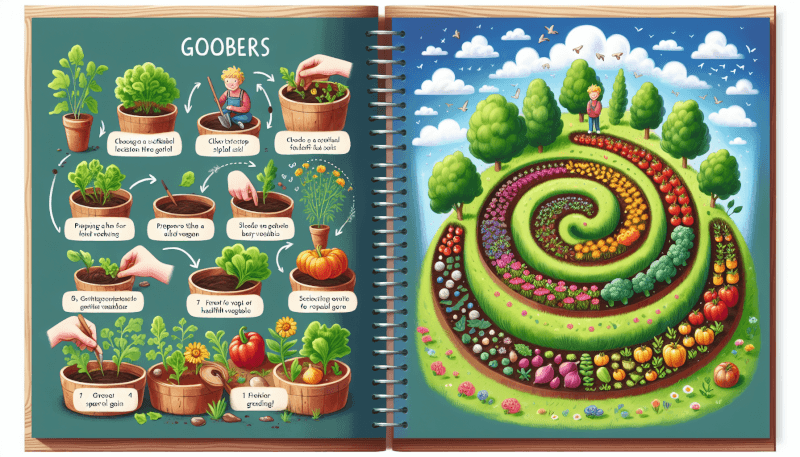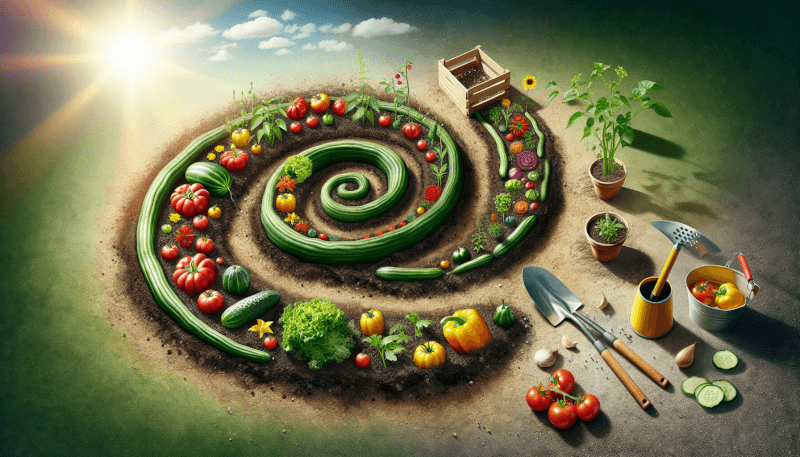If you’ve always wanted to start your own vegetable garden but don’t have a lot of space or experience, we’ve got just the solution for you: a DIY vegetable spiral garden! This beginner’s guide will walk you through the steps of creating your very own spiral garden, allowing you to grow a variety of vegetables in a compact and visually appealing way. From choosing the right location to selecting the perfect plants, we’ll cover everything you need to know to get started on your gardening journey. So grab your gardening gloves and let’s dig in!
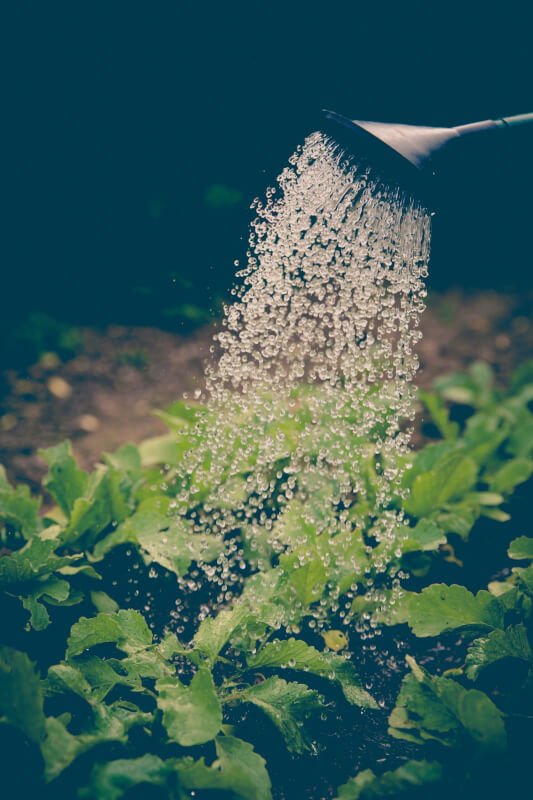
Choosing the Right Location
Considering Sunlight
When choosing the location for your vegetable spiral garden, one of the most important factors to consider is sunlight. Most vegetables require at least six hours of direct sunlight per day for optimal growth. Take some time to observe the area you have in mind and assess how much sunlight it receives throughout the day. Keep in mind that trees or buildings in the vicinity may cast shadows and reduce the amount of sunlight reaching your garden. Aim to select a spot that gets ample sunlight to ensure the healthy development of your plants.
Assessing Drainage
Another crucial aspect to consider when choosing a location for your spiral garden is drainage. Vegetables generally prefer well-draining soil to prevent waterlogged roots, which can lead to diseases and rot. Avoid low-lying areas that tend to collect water after rainfall, as this can drown your plants. Instead, look for a spot with good natural drainage or consider implementing raised beds to help improve the drainage in your garden.
Evaluating Soil Quality
The quality of the soil in your chosen location is vital for the success of your vegetable spiral garden. Conduct a soil test to assess its pH level and nutrient content. Most vegetables thrive in slightly acidic to neutral soil with a pH range of 6.0 to 7.0. If the pH is too low or too high, you can adjust it by adding amendments such as lime to raise the pH or sulfur to lower it. Additionally, consider the texture of the soil. Vegetables prefer loamy soil that is well-draining but retains some moisture. Sandy soil may drain too quickly, while clay soil can become compacted and waterlogged. If needed, you can improve the soil structure by adding organic matter to promote healthy plant growth.
Designing Your Spiral Garden
Understanding the Concept
The concept of a spiral garden involves creating a unique design that allows you to maximize space and promote efficient gardening. The spiral shape not only adds visual appeal but also provides different microclimates within the garden due to the varying exposure to sunlight and wind. This allows for greater diversity in the types of plants that can be grown. Additionally, the spiral design offers ease of access to all areas of the garden, making it convenient for planting, maintenance, and harvesting.
Determining Spiral Size
The size of your spiral garden will depend on the available space and the amount of vegetables you want to grow. Generally, a smaller spiral with one or two complete rotations can fit in a smaller backyard, while a larger spiral with more rotations can accommodate a greater variety and quantity of plants. Consider the accessibility and reachability of the center of the spiral when determining the size. The ideal diameter for the innermost circle is around 3-4 feet, as this allows for easy reaching from all sides of the spiral.
Creating Pathways
To ensure easy and convenient access to all areas of your spiral garden, it is essential to create well-defined pathways. These pathways will enable you to reach the plants for watering, weeding, and harvesting without stepping on the planting beds. You can use a variety of materials such as gravel, stepping stones, or wood chips to create clear pathways. Plan the width of the pathways according to your comfort and the space available, making sure they are wide enough to accommodate your gardening tools and movements.
Preparing the Ground
Clearing the Area
Before constructing your spiral garden bed, it is crucial to clear the area of any existing vegetation or debris. Remove any grass, weeds, or other unwanted plants from the designated space. Use a garden fork or shovel to loosen the soil, making it easier to remove the unwanted vegetation. This will ensure a clean slate for your new garden bed and help prevent any competition for nutrients and space between the existing plants and your chosen vegetables.
Removing Weeds and Grass
After clearing the area, take the time to thoroughly remove any remaining weeds or grass. Gently pull them out from the roots to prevent regrowth. Weeds can quickly spread and compete with your vegetables for resources, so it is important to be meticulous in removing them. Removing weeds by hand is an effective and organic method of weed control. However, if the weed infestation is severe, you may consider using a weed barrier or applying an organic herbicide to eliminate them.
Amending the Soil
After clearing the area, it is time to amend the soil to ensure optimal growing conditions for your vegetables. As mentioned earlier, conducting a soil test will help you determine the pH and nutrient levels of your soil. Based on the results, you can add amendments to improve the soil quality. Organic matter, such as compost, well-rotted manure, or shredded leaves, can be mixed into the soil to increase its fertility and moisture retention capabilities. This will provide a rich environment for your plants to thrive in and help promote healthy growth.
Choosing Vegetables for Your Spiral Garden
Selecting Suitable Plants
Choosing the right vegetables for your spiral garden is essential for its success. Consider the climate and seasonality of your region when selecting plants. Some vegetables, like tomatoes and peppers, require warmer temperatures, while others, like lettuce and kale, can tolerate cooler temperatures. Take into account the amount of sunlight your garden receives and select plants that match those light requirements. Additionally, consider the space each vegetable requires when fully grown, as overcrowding can stunt growth and lead to disease. Research the specific needs of each vegetable you intend to grow to ensure you provide the ideal growing conditions for them.
Considering Companion Planting
Companion planting is an important technique in spiral gardening that involves growing compatible plants together. Certain plants have natural affinities for each other, and when grown in close proximity, they can benefit from each other’s presence. For example, planting marigolds near tomatoes helps repel pests, while intercropping herbs like basil with vegetables can enhance flavors and deter pests. Consider companion planting when choosing your vegetables to promote healthy growth, deter pests, and improve the overall productivity of your spiral garden.
Accounting for Vertical Growth
In a spiral garden, vertical space is key to maximizing the growing area. Some vegetables, like pole beans, cucumbers, and peas, have a natural inclination to grow vertically. Take advantage of this by providing trellises, cages, or supports for these plants. By training them to grow upwards, you not only save space but also make harvesting and maintenance easier. Additionally, vertical growth can help reduce the likelihood of diseases and pests by providing better airflow and increased sunlight exposure.

Soil Preparation and Conditioning
Testing Soil pH
Before planting your vegetables, it is essential to test the pH level of your soil. This will help you determine if any amendments are needed to adjust the pH to the optimal range for vegetable growth. pH testing kits are readily available at gardening centers or online. Follow the instructions provided with the kit to obtain an accurate reading. If the pH level is too high, indicating alkaline soil, you can lower it by adding organic matter or elemental sulfur. If the pH level is too low, indicating acidic soil, you can raise it by adding lime or wood ash. Aim for a pH range of 6.0 to 7.0, as most vegetables thrive in slightly acidic to neutral conditions.
Improving Soil Structure
In addition to pH adjustments, it is important to improve the structure of your soil. Soil structure refers to the way soil particles bind together, affecting water retention, aeration, and nutrient availability. If your soil is compacted or clayey, it may hinder root growth and drainage. To improve the soil structure, you can add organic matter such as compost, well-rotted manure, or peat moss. These additions help loosen the soil, making it more friable and allowing roots to penetrate easily. Incorporating organic matter also enhances the soil’s water-holding capacity, reducing the risk of waterlogging during heavy rains.
Adding Organic Matter
To enrich the soil with essential nutrients and promote healthy plant growth, it is beneficial to add organic matter. Organic matter acts as a natural fertilizer, providing a slow release of nutrients to the plants as it decomposes. It also improves the soil’s ability to retain moisture and enhances microbial activity, creating a thriving ecosystem for your plants. You can incorporate organic matter into the soil by mixing in well-rotted compost, aged manure, or organic soil amendments. Work the organic matter into the top 6 to 8 inches of soil, ensuring that it is evenly distributed throughout the planting area.
Constructing the Spiral Garden Bed
Gathering Materials
Before starting the construction of your spiral garden bed, gather all the necessary materials. This includes bricks, stones, logs, or any other durable material that can form the outer edge of your spiral garden. You will also need a shovel or a spade to dig the pathway and the planting beds. If desired, you can add landscaping fabric or cardboard at the bottom of the garden bed to discourage weed growth. Ensure that you have all the materials on hand before you begin to streamline the construction process.
Building the Outer Edge
To create the outer edge of your spiral garden bed, lay down your chosen materials in a spiraling fashion. Start from the center and work your way out, gradually increasing the height of the outer edge with each rotation. Make sure the materials are tightly packed together to form a stable and secure structure. This outer edge will define the boundary of your spiral garden and help retain the soil within the bed. When constructing the edge, ensure that it stands firm and can withstand the weight of the soil and plants.
Creating the Spiral Shape
Once the outer edge is in place, it is time to create the spiral shape within the garden bed. Beginning at the center, use a shovel or a spade to dig a pathway that quickly spirals around the garden. Determine the width of the pathway based on your preference and the space available. As you dig the pathway deeper into the bed, be mindful to leave wider areas for the planting beds. The planting beds can be created by mounding soil on either side of the pathway, gradually increasing in height towards the outer edge. Once the planting beds are formed, smooth out the pathways and ensure that they are gently sloping to allow for proper drainage.
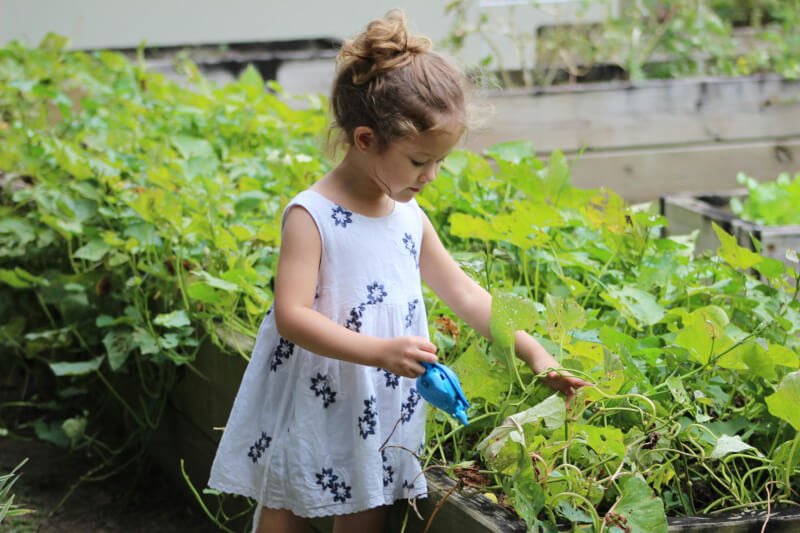
Planting Techniques
Starting from the Center
When it’s time to plant your vegetables, start from the center of the spiral garden and work your way outwards. Begin by planting taller or vining vegetables in the center, such as tomatoes, beans, or cucumbers. These plants can benefit from the vertical space provided by the spiral shape and allow for easy trellising. As you move towards the outer edge, gradually transition to shorter or bushy vegetables like lettuce, spinach, or herbs. This planting technique ensures that all plants receive adequate sunlight and airflow, maximizing their health and productivity.
Choosing Placement
As you plant your vegetables, consider their specific requirements for sunlight, spacing, and companion planting. Place sun-loving plants on the south or west side of the spiral to maximize their exposure to the sun. Keep in mind that taller plants may cast shadows, so arrange your vegetables accordingly to prevent shading of shorter plants. Allow sufficient spacing between plants to ensure proper air circulation and prevent overcrowding. Refer to seed packets or plant labels for recommended spacing guidelines. Also, consider companion planting to reap the benefits of intercropping and natural pest control.
Plant Spacing
Proper plant spacing is crucial for the healthy growth and development of your vegetables. Overcrowding can lead to competition for nutrients, increased humidity, and a higher risk of diseases. Follow the recommended spacing guidelines for each plant variety to ensure sufficient room for growth. As a general rule, small plants like lettuce or radishes should be spaced around 6 to 8 inches apart, while larger plants like tomatoes or peppers may require 1 to 2 feet between them. Adjust the spacing accordingly based on the specific needs and growth habits of your chosen vegetables.
Watering and Mulching
Establishing a Watering Schedule
Regular and consistent watering is essential for the health and productivity of your spiral garden. Establishing a watering schedule will help you maintain proper moisture levels and prevent either drought stress or waterlogging. The frequency of watering will depend on various factors such as the weather, soil type, and plant requirements. As a general guideline, aim to water your vegetable spiral garden deeply once or twice a week, providing enough moisture to reach the root zone. Adjust the watering schedule based on the needs of your plants and monitor the soil moisture levels to ensure optimal conditions.
Using Drip Irrigation
Drip irrigation is an efficient watering method for vegetable gardens, including spiral gardens. This system delivers water directly to the plant roots, minimizing water loss through evaporation or runoff. It also helps prevent leaf diseases by ensuring the foliage remains dry. Drip irrigation systems consist of plastic tubing with emitters that slowly release water at the base of the plants. These systems can be customized to suit the layout and size of your spiral garden. Consider installing a drip irrigation system to automate the watering process and conserve water.
Applying Mulch
Mulching is an important practice in a spiral garden as it offers numerous benefits. Mulch helps to conserve moisture by reducing evaporation from the soil surface, preventing dry spells and reducing the frequency of watering. It also acts as a barrier, suppressing weed growth and reducing competition for resources. Furthermore, mulch insulates the soil, creating a stable temperature environment for the roots. Organic mulches such as straw, leaves, or wood chips decompose over time, enhancing soil fertility and improving its structure. Apply a layer of mulch around the base of your plants, making sure to keep it a few inches away from the stems to prevent rotting.
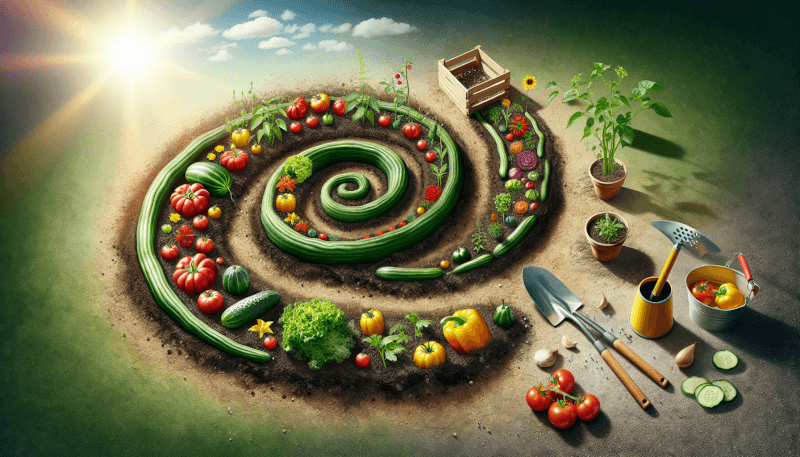
Maintaining Your Spiral Garden
Weeding
Regular weeding is essential to keep your spiral garden healthy and productive. Weeds can compete with your vegetables for nutrients, sunlight, and water. By removing weeds promptly, you reduce the risk of stunted growth and minimize the likelihood of pests and diseases. Regularly inspect your garden bed for any weed growth and pull them out by hand, making sure to remove the roots. Mulching, as mentioned earlier, can also help suppress weed growth by preventing weed seeds from germinating.
Fertilizing
To ensure your vegetables receive the necessary nutrients for healthy growth, regular fertilization is crucial. A nutrient-rich soil promotes robust plants and a bountiful harvest. Consider using organic fertilizers, such as compost, well-rotted manure, or organic vegetable fertilizers, which provide a slow release of nutrients. The type and frequency of fertilization will depend on the specific needs of your vegetables. Leafy greens generally require a nitrogen-rich fertilizer, while fruiting plants may benefit from additional phosphorus and potassium. Follow the package instructions for application rates and adjust accordingly based on plant response.
Pruning and Trellising
Certain vegetables, like tomatoes, cucumbers, and beans, benefit from pruning and trellising. Pruning involves removing suckers or side shoots from plants to redirect energy towards fruit production and enhance airflow. This practice helps reduce the risk of diseases and encourages larger and healthier fruits. Trellising provides support for vining or climbing vegetables and prevents them from sprawling on the ground. It also helps maximize space utilization in your spiral garden. Secure plants to trellises or cages as they grow, ensuring they have enough support to climb and develop properly.
Harvesting and Succession Planting
Knowing When to Harvest
One of the joys of vegetable gardening is the reward of harvesting your own fresh produce. Harvesting at the right time ensures optimal flavor, texture, and nutritional value. Each vegetable has different indicators for maturity, such as color, size, or firmness. Research the specific harvesting guidelines for each vegetable you are growing and familiarize yourself with the signs of readiness. Harvesting too early or too late can impact the taste and quality of your vegetables. Regularly inspect your plants and enjoy the fruits of your labor when they are at their peak ripeness.
Utilizing Succession Planting
Succession planting is a technique that involves staggering the planting of crops to ensure a continuous harvest throughout the growing season. Instead of planting all your vegetables at once, you can sow seeds or transplant seedlings at regular intervals. This allows you to enjoy a steady supply of fresh produce and prevents large harvests that may go to waste. As you harvest mature vegetables, replant the vacated spaces with new seeds or seedlings. Take advantage of the unique microclimates within your spiral garden to extend the growing season and maximize your harvest.
Extending the Growing Season
To extend the growing season of your spiral garden and enjoy fresh vegetables for longer, consider implementing various techniques. If you face frost or cold temperatures, you can use protective covers such as row covers or cloches to shield your plants and provide additional warmth. These covers can also protect your crops from pests and reduce wind damage. Additionally, consider planting cold-tolerant vegetables in early spring or late fall to take advantage of milder temperatures. Using season-extending techniques will allow you to enjoy homegrown vegetables for an extended period, even when the weather is less favorable.
In conclusion, creating your DIY vegetable spiral garden is an exciting and rewarding endeavor. By carefully selecting the right location, designing an efficient layout, and preparing the soil, you set the foundation for a thriving garden. Choosing suitable vegetables, incorporating organic matter, and constructing the garden bed ensure optimal growing conditions. Proper planting techniques, watering and mulching practices, and regular maintenance guarantee healthy plants and bountiful harvests. Remember to continuously learn and experiment, as each gardening experience is unique. Embrace the joys of growing your own vegetables and savor the flavors of your spiral garden. Happy gardening!
